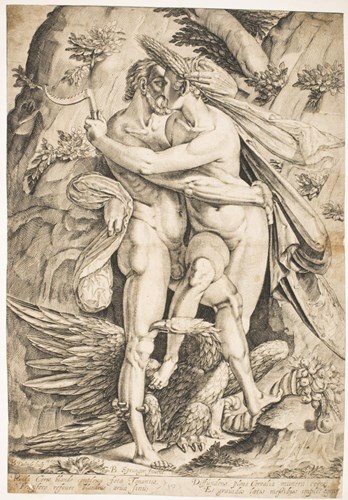Demeter
The position of Demeter in the Orphic mythological tradition is relatively similar to her adventures in the Homeric Hymn. However, some notable differences focus on her true identity and connection to the principal male deity who rules the cosmos. According to the text of the famous Derveni papyrus, recovered from a funeral pyre in Thessaly, Zeus becomes the ruler of the whole world and proceeds to rape his mother Rhea, who becomes his wife, Demeter. Therefore, the two gods are not siblings, as widely held in mainstream narratives. The unitary nature of Rhea/Demeter appears in various ancient sources. For example, Philodemus, a Syrian Epicurean philosopher and poet, cites the Athenian historian Kleidemos regarding how “Demeter and [Rhea] the mother of the gods exist as one”.
The rape of Rhea/Demeter by Zeus occurs in the Cretan cave, where Rhea supposedly hid the young god after birth to protect him from his father, Cronus. The forcible copulation begets Persephone, who is not necessarily a beautiful maiden but has six eyes (including some on her forehead), an animal’s head on her neck, and horns. Her monstrous form frightens her mother, who flees from her daughter without “giving her the breast” (an attitude in sharp contrast to Demeter’s desperate search for Persephone in the Homeric Hymn). However, her physical appearance did not deter Zeus, who proceeds with another incestuous union in the Creta cave, this time with Persephone, who thus becomes the mother of Dionysus. The Curetes, who attended young Zeus, also cared for Persephone and Dionysus. Interestingly, Zeus took the form of a snake to mate with Rhea/Demeter and Persephone, a guise that originated in his worship as Meilichius, a god of agricultural bounty and household stores.

Pluto and Ceres (Jupiter and Ceres), Bartholomeus Dolendo, 1598, engraving, The Philadelphia Museum of Art © The Philadelphia Museum of Art





